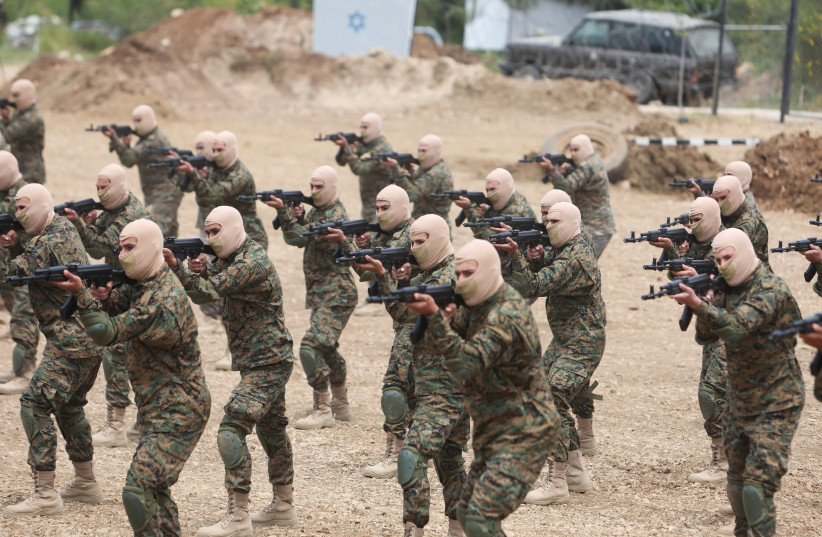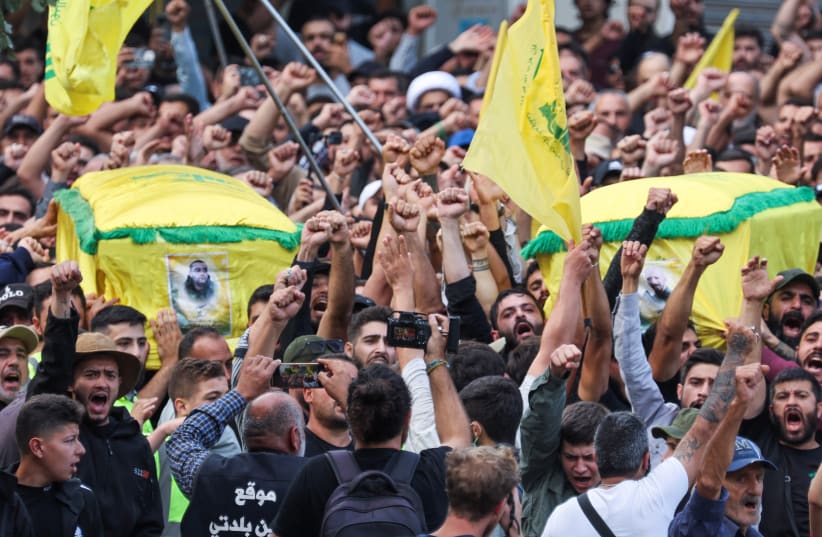An attack in northern Israel on Monday killed Patnibin Maxwell, a thirty-one year old from India working in Israel with a wife seven-months pregnant, India Today reported. Nine others were wounded.
“The incident happened near Margaliot, targeting agricultural workers, Israel confirmed,” the report said.
It’s not known if they were the target, but Hezbollah’s attacks are calculating. In addition to thousands of unguided rockets, it has also used anti-tank guided missiles to target many specific locations on the border. It has damaged 500 buildings in this war, since October 8 in support of the Hamas massacre the day before.
Hezbollah is only displaying the threat that could emerge in a larger war, enabled by the international community the past two decades. Israel left Lebanon in 2000 and Hezbollah became exponentially more powerful. This happened in Gaza too Israel left it in 2005.In both instances terror groups moved closer to Israel’s border and with the backing of Iran and connivance of other countries, the groups became massively powerful. In essence, Hamas today is like Hezbollah was a decade ago. Hezbollah is considered the stronger of the two groups. However, Hamas showed on October 7 that it poses an existential threat. We now know the number of Hamas tunnels was underestimated. In addition we know Hamas likely pushed messages via third countries that were designed to lure Israel into a false sense that Hamas was “deterred.”
No mixed messages from Hezbollah
There are no mixed messages with Hezbollah, which is simply an undeterred threat. However, there are many problematic trends taking place. US envoy Amos Hochstein arrived in Lebanon this week and is pushing for diplomacy as the “only way” to stop the Hezbollah attacks. It’s important to remember that back in October 2022 Israel was pressured into a maritime deal with Lebanon. Hochstein and the US at the time claimed that this deal would somehow reduce tensions by demarcating the maritime border.

Oddly, Israeli leaders at the time bought this, even though the deal was only achieved after Hezbollah threatened war. Basically, someone thought that letting Hezbollah threaten war and then rewarding it was a good way to make a deal.
We now know the deal did not reduce the chances of war. Israel embraced diplomacy and the “reward” was thousands of rockets fired at northern Israel, 500 homes damaged, 80,000 people evacuated and a dozen people murdered by Hezbollah in the North.
Pat Maxwell, the Indian worker, now joins the list of Hezbollah’s crimes. However, the international community and the UN has not condemned Hezbollah. The UN was supposed to make sure Hezbollah would not be on the border after 2006. Instead, the UN helped pave the way for Hezbollah. This also happened in Gaza. In both instances the international community has played a major role in enabling these illegal terrorist groups to grow stronger and increase their threats by embedding in a civilian population.
ISRAEL TODAY is engaged in a difficult campaign against Hezbollah. Because Israel is always seen as the aggressor, even when Hezbollah murders people with rockets, the IDF must weigh escalation. There is a belief among Israel’s top brass and political leadership that the Hezbollah threat must end. However, it’s not clear if Israel has the political capital to engage in an offensive in the north, while it is dealing with the Hamas threat in Gaza.
Hezbollah can read Israel’s media just as well as anyone else and understands that Israel’s threats against Hezbollah are weighted against concerns about a two-front war. This isn’t 1967 or 1973. Hezbollah believes it will receive “proportional” responses to its endless daily attacks. It also chooses the time and place to attack.Sometimes it targets military bases such as the northern command in Safed or Mount Meron, sometimes it targets homes. It has openly said that the residents of northern Israel will not return until Hezbollah’s demands are met.Hezbollah wants Israel to cave into a deal in Gaza. This is what Iran wants and what other patrons and hosts of Hamas want. The goal of course is to get Israel to leave Gaza and reset the clock to October 6, so that another October 7 can happen when Iran or Hezbollah are ready.Israel has also shifted messaging a bit. While Israeli leaders had previously threatened to turn parts of Lebanon into Gaza, basically a widespread intense military campaign, it’s clear now that the messaging is about removing Hezbollah from the border. Pressure from the US or France for a diplomatic deal will come. Israel has learned what these deals mean. It means Hezbollah got stronger and decided when to raise tensions. Israel’s northern residents have said they don’t want to live under this kind of threat in the future. This leaves a narrowing set of choices for Israel to follow.Meanwhile the Hezbollah threat continues. Hezbollah took credit Monday for targeting a kibbutz and other villages and IDF vehicles. Hezbollah also took credit for a rocket barrage that led to a power outage in Nahariya. Iranian media highlighted the Hezbollah claims.